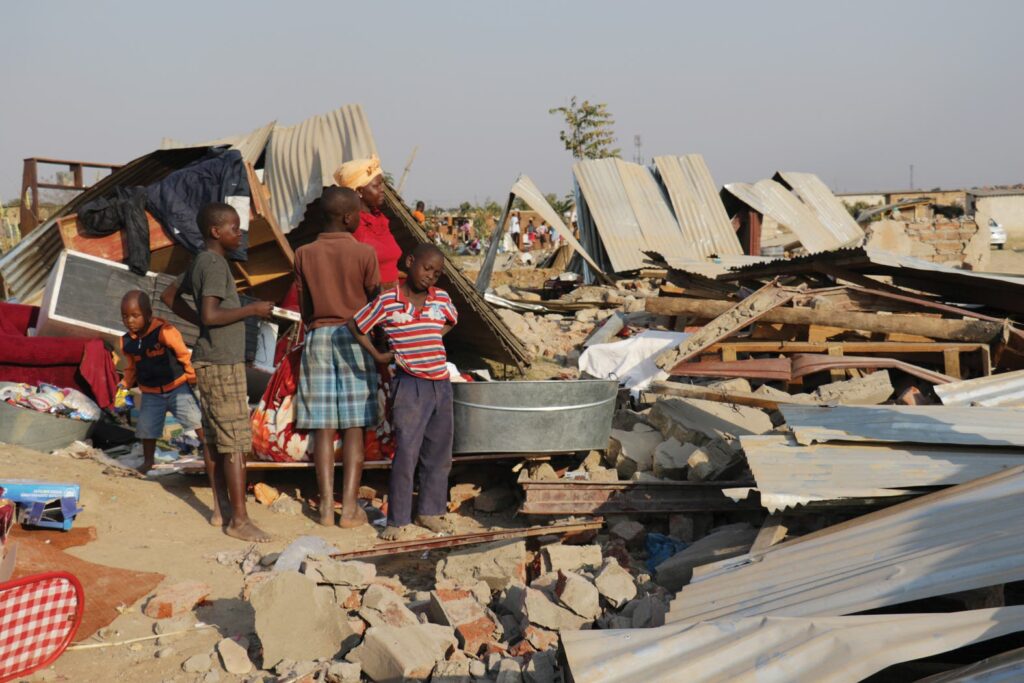
At least 20 000 households are facing displacement across Zimbabwe forcing government to look for alternative relocation areas for the affected families.
Addressing journalists at a post-cabinet media briefing on Tuesday, Information, Publicity and Broadcasting Services minister Monica Mutsvangwa said the number of households facing displacement stands at a national total of 21 852.
Harare Metropolitan Province tops the list at 15 713 households, followed by Mashonaland East (1 947), Manicaland (1 683), Mashonaland Central (622), Masvingo (575) Bulawayo (549), Matabeleland South (532), Matabeleland North and Midlands at 105 each, and Mashonaland West (21).
“The provision of relief to distressed households, and identification of relocation areas, will continue across all the provinces in order for corrective action to be taken.
“The production of appropriate housing plans and architectural designs which promote settlement densification through high-rise structures is a pre-requisite for the provision of housing to families faced with relocation.
“In this regard, Cabinet was informed that the plans and designs have now been produced through collaboration between the Ministries of National Housing and Social Amenities; and Local Government and Public Works.”
Mutsvangwa said the designs would be the H-type with two and three-bedroomed units, and target low income earners.
“Modifications can also be availed for middle income earners. Building brigades will be revived.
“The designs will accommodate public facilities at the ground floor, and include WIFI centres, a community hall with ablutions, an amusement area, a play centre, and a pre-school.
“Other amenities will entail shops, a pharmacy, a surgery, and a hair salon. Liquor outlets and activities that require bulk storage and haulage are excluded.”
Mutsvangwa said resources for the completion of all housing projects would be mobilised.
“As the exercise to streamline the operation of cooperatives continued, Cabinet agreed that being a co-operative requires compliance with a legal process. This will assist in promoting policy consistency at all levels of Government.”
Meanwhile, on the Emergency Road Rehabilitation Programme, Mutsvangwa said the respite from the incessant rains has allowed space for attending to the daunting task at hand.
“The planning team has now compiled a compendium of all road projects to be implemented by each Road Authority, province by province.
“Similarly, the selection of roads to be taken over from Local Authorities by the Ministry of Transport and Infrastructural Development has started. The selection of contractors for Harare and other cities and towns has also started.”
She said Treasury will the CMED (Pvt.) Ltd to use its state-of-the-art equipment on projects under the Emergency Road Rehabilitation Programme.
“The equipment includes three new graders, tippers, road re-claimers and heavy-duty flatbed trucks. CMED’s Civil Construction Unit formed in 2020 has completed rehabilitation works spanning 42 kilometres.
“As soon as Treasury fulfils its pledge and releases the financial resources, CMED will soon deploy its teams, starting with Harare and Bulawayo Metropolitan provinces. The entity can also take up other roads across the provinces.”
Cabinet, according to Mutsvangwa identified immediate emergencies in Headlands in Manicaland, Musavezi Bridge along the Shurugwi-Mhandamabwe road in Midlands Province, and bridges in Siakobvu in Mashonaland West.
She said these emergencies were being addressed through the necessary restorative work while contractors are already on site.